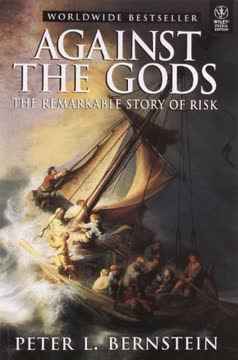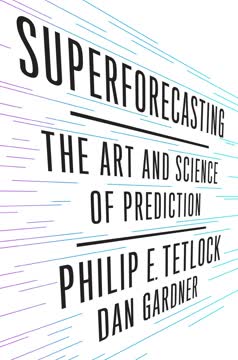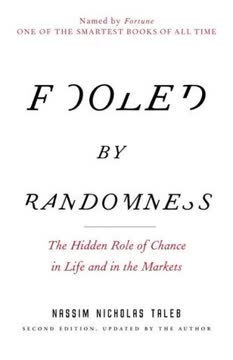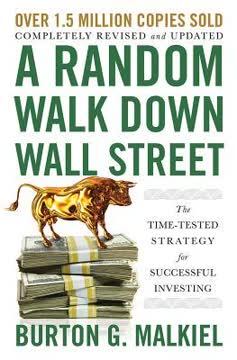Key Takeaways
1. Poker is a Game of Skill, Not Luck
For above all, you must remember that poker is not primarily a game of luck. It is a game of skill.
Skill over chance. While luck plays a role in individual hands, poker is fundamentally a game of skill. Expert players minimize the impact of luck by making informed decisions based on strategy, psychology, and mathematics. They focus on maximizing profits on good hands and minimizing losses on bad hands.
Long-term perspective. Over the long run, the best players will consistently win more than they lose. This is because they are making plays with positive expectation, while weaker players are making plays with negative expectation. The key is to focus on making the right decisions, not on the outcome of any single hand.
Expert vs. novice. Beginning players rely on big hands and lucky draws, while expert players use their skills to minimize losses on bad hands and maximize profits on big hands. They also are able to judge better than others when a big hand is not the best hand and when a small hand is the best hand.
2. Expectation and Hourly Rate Drive Profitability
Anytime you make a bet with the best of it, where the odds are in your favor, you have earned something on that bet, whether you actually win or lose the bet.
Mathematical expectation. This is the amount a bet will average winning or losing. It is a crucial concept for evaluating gambling problems and poker plays. A positive expectation means the odds are in your favor, while a negative expectation means the odds are against you.
Hourly rate. This is the amount of money you expect to win per hour. It is determined by your share of the total hourly loss of the bad players in the game, minus the house rake or hourly seat charge. Professional players focus on maximizing their hourly rate by making plays with positive expectation.
Focus on the long run. Serious gamblers bet only when they have the best of it, and they understand that their eventual winnings will approximate their projected hourly rate multiplied by the total hours played. They are not anxious about making a big score, but rather focus on making the right plays.
3. The Fundamental Theorem: Play With Full Knowledge
Every time you play a hand differently from the way you would have played it if you could see all your opponents' cards, they gain; and every time you play your hand the same way you would have played it if you could see all their cards, they lose.
The core principle. This theorem highlights the importance of making decisions based on complete information. In poker, where information is incomplete, the goal is to play as closely as possible to the way you would play if you could see all your opponents' cards.
Mistakes and gains. When opponents play differently from how they would if they could see your cards, you gain. Conversely, when they play as they would with full knowledge, you lose. The goal is to make your opponents play in a way that would be incorrect if they knew what you had.
Deception and reading hands. The Fundamental Theorem emphasizes the importance of both deception and reading hands. You must play deceptively to make your opponents play incorrectly, and you must read hands accurately to play correctly yourself.
4. Ante Structure Dictates Starting Hand Requirements
The lower the ante in comparison to future bets, the fewer hands you should play; the higher the ante, the more hands you should play.
Ante size matters. The size of the ante in relation to future bets is a key factor in determining how many hands you should play. A large ante encourages looser play, while a small ante encourages tighter play.
Pot odds and expectation. The ante creates an initial pot, and you should play your hand in terms of the odds you're getting for each bet in relation to your expectation of winning. The higher the ante, the better the pot odds, and the more hands you should play.
Stealing antes. In large-ante games, it becomes correct to try to steal antes, especially against tight players. In small-ante games, you should play tight and let aggressive players control the game.
5. Pot Odds: The Price of a Call
It is essential to know pot odds to figure out expectation.
Pot odds defined. Pot odds are the odds the pot is giving you for calling a bet. They are calculated by comparing the amount you have to call to the total amount in the pot.
Comparing odds. When all the cards are out, you must decide whether your hand is worth a call based on the pot odds and your chances of having the best hand. When more cards are to come, you must compare your chances of improving to your pot odds.
Exposed cards and position. In open-handed games, you must take into account the effect of exposed cards on your chances of making a hand. Your position in the betting sequence may also reduce the pot odds you are getting.
6. Effective Odds: Planning for Future Bets
When you compute odds on a hand you intend to play to the end, you must think not in terms of the immediate pot odds but in terms of the total amount you might lose versus the total amount you might win.
Beyond immediate odds. When there is more than one card to come, you must consider future bets when assessing your pot odds. Your effective odds are the real odds you are getting from the pot when you call a bet with more than one card to come.
Calculating effective odds. You add all the calls you will have to make, assuming you play to the end, to determine the total amount you will lose if you don't make your hand. Then compare this figure to the total amount you should win if you do make the hand.
Exceptions to effective odds. You do not have to consider future bets when either you or your opponent is all-in or when you have good reason to think your opponent might check on the next round.
7. Implied Odds: The Promise of Future Winnings
Implied odds are based on the possibility of winning money in later betting rounds over and above what is in the pot already.
Future profits. Implied odds are the ratio of your total expected win when your card hits to the present cost of calling a bet. They are based on the possibility of winning money in later betting rounds over and above what is in the pot already.
Pot-limit and no-limit games. Implied odds are most significant in pot-limit and no-limit games, where a future bet can be as large as the amount of money a player has in front of him. In these games, you are often considering not how much is in the pot right now, but rather how much can be won on a future round of betting.
Reverse implied odds. These describe situations in which you have a mediocre hand with little chance of improving, which you think is the best hand at the moment, yet your opponent keeps betting. You are in the position of winning the minimum if you have the best hand but losing the maximum if you have the worst hand.
8. Deception: The Art of Misinformation
The more your play gives away what you have, the less likely it is that your opponents will make a mistake.
The cost of giving away your hand. When you play in a way that lets your opponents know what you have, you may be costing yourself substantially. The more your play gives away what you have, the less likely it is that your opponents will make a mistake.
Deception and opponent ability. The tougher your opponents are, the more you must consider playing a hand other than optimally to throw them off. The weaker they are, the more you can get away with optimum play.
Other factors in deception. The size of the pot, the size of the bets, and the number of opponents in the pot also affect how much you should disguise your hand. The general rule is: The better the players and the smaller the pot, the more you disguise your hand when there are more cards to come.
9. Win Big Pots Immediately
As a pot gets larger and larger, you nearly always want to win it instantly.
The goal is to win now. When the pot is large, you generally prefer your opponent to fold rather than call, even when your hand is the best hand. This is because when you bet in a limit game and the pot is large, your opponent's hand, though second best, is rarely so much of an underdog that he is not getting good enough odds to chase you.
Betting to drive out opponents. You should bet or raise to drive out as many opponents as possible, even when you suspect you have the second-best hand. You want to force out the other hands.
Delaying to drive out opponents. In structured games, you may want to wait until the bet doubles in size before putting in a raise to drive people out.
10. The Free Card: A Double-Edged Sword
When you have the best hand, you do not want to give opponents a free card since you are giving them a chance to outdraw you and win the pot.
Giving a free card. This means checking a hand you could have bet when there are more cards to come. When you know or are pretty sure you have the best hand, you have to decide whether or not to give your opponent a free card.
Getting a free card. When you do not have the best hand, you want to try to get a free card to get a free shot at winning the pot. Getting a free card against reasonably good players is not easy.
Position and the free card. The player who acts second can give himself a free card, but the player who acts first cannot. Therefore, in first position you have to bet some hands you wouldn't bet in last position because you do not want to give your opponent the option of checking for a free card with the worst hand.
11. The Semi-Bluff: A Powerful Weapon
A semi-bluff is a bet with a hand which, if called, does not figure to be the best hand at the moment but has a reasonable chance of outdrawing those hands that initially called it.
Betting on the come. The semi-bluff is a bet with a hand that has a reasonable chance of improving to the best hand. It is a powerful weapon because it combines the advantages of a bluff with the possibility of winning in a showdown.
Advantages of the semi-bluff. It makes your opponent play incorrectly, it prevents you from giving worse hands free cards, it adds deceptiveness to your game, and it can sometimes get you a free card.
Semi-bluffs vs. pure bluffs. Semi-bluffs are generally more profitable than pure bluffs because they have more ways of winning. They are also a good way to randomize your bluffs.
12. Position: The Power of Acting Last
The lower the ante in comparison to future bets, the fewer hands you should play; the higher the ante, the more hands you should play.
Last is best. It is far better to be last to act because it is generally easier to decide what to do after you have seen what your opponents have done. The worst position is to be first since you must act before you know what any of your opponents are going to do.
Advantages of last position. You can call without fear of a raise behind you, you can check behind opponents to get a free card, and you can bet or raise with more information.
Adjusting to position. You must adjust your play to your position in the betting sequence. You should play more aggressively in last position and more cautiously in first position.
Last updated:
FAQ
What's The Theory of Poker about?
- Comprehensive Strategies: The Theory of Poker by David Sklansky explores fundamental theories and concepts applicable across various poker games, focusing on the logic behind decisions.
- Skill Over Luck: The book emphasizes that poker is primarily a game of skill, where strategic thinking minimizes the impact of luck.
- Broad Application: It covers games like Texas Hold'em and Seven-Card Stud, but the principles are relevant to all poker variations, making it valuable for players at any level.
Why should I read The Theory of Poker?
- Expert Insights: Written by David Sklansky, a recognized authority in gambling, the book offers deep insights into poker strategy to elevate your game.
- Improves Decision-Making: It teaches readers to analyze situations critically, leading to better decisions and improved performance at the table.
- Applicable to All Levels: Whether you're a beginner or experienced, the concepts can refine your skills and understanding of the game.
What are the key takeaways of The Theory of Poker?
- Fundamental Theorem of Poker: This theorem emphasizes making decisions based on incomplete information to minimize opponents' gains.
- Expectation and Odds: Understanding mathematical expectation and pot odds is crucial for making profitable decisions.
- Importance of Deception: The book discusses the value of deception, including strategies like check-raising and semi-bluffs.
What is the Fundamental Theorem of Poker according to David Sklansky?
- Definition: The theorem states, "Every time you play a hand differently from the way you would have played it if you could see all your opponents' cards, they gain."
- Application: It applies universally in poker, encouraging players to think critically about their decisions and opponents' reactions.
- Strategic Implications: Adhering to this theorem helps minimize mistakes and maximize winning chances by confusing opponents.
How does The Theory of Poker address bluffing?
- Bluffing as a Strategy: Bluffing is essential but should be used judiciously, most effective when opponents are likely to fold.
- Optimal Bluffing Frequency: The book suggests bluffing at a frequency where the chances against your bluffing match the pot odds your opponent is getting.
- Situational Awareness: Understanding opponents' tendencies is crucial when deciding to bluff, considering their likelihood to call or fold.
How do pot odds work in poker according to David Sklansky?
- Definition of Pot Odds: Pot odds are the ratio of the current pot size to the bet size you must call, helping determine if a call is profitable.
- Calculating Pot Odds: For example, with $50 in the pot and a $10 bet, you get 6-to-1 odds. If your winning chances are better than those odds, it's correct to call.
- Importance in Decision-Making: Understanding pot odds allows for informed decisions about calling, raising, or folding, leading to better long-term results.
What is a semi-bluff in poker as explained in The Theory of Poker?
- Definition: A semi-bluff is a bet with a hand that isn't currently the best but has a chance to improve to the best hand.
- Example of Semi-Bluff: Betting with a four-flush in draw poker is a semi-bluff; you hope opponents fold, but if they call, you might still make your flush.
- Strategic Use: Semi-bluffs are effective in multi-way pots, increasing the chance of opponents folding and capitalizing on your hand's potential.
What are the best strategies for raising in poker according to David Sklansky?
- Raising for Value: Raise to get more money in the pot when you have the best hand, maximizing your winnings.
- Driving Out Opponents: Use raising to drive out opponents when you believe you have the best hand, especially in multi-way pots.
- Bluffing and Semi-Bluffing: Raising can serve as a bluff or semi-bluff, adding deception to your play and potentially leading to opponents folding better hands.
How does The Theory of Poker explain the importance of position in poker?
- Position Matters: A player's position in the betting sequence is critical, with later positions allowing more informed decisions.
- Last Position Advantages: Players in the last position can control the action more effectively, leading to more profitable plays.
- First Position Challenges: Early position players face more uncertainty and must play tighter due to less information about opponents' hands.
How do betting limits affect poker strategy according to The Theory of Poker?
- Impact of Betting Limits: The game's structure, including betting limits, significantly influences strategy, with higher limits encouraging looser play.
- Adjusting to Structure: Players must adjust strategies based on ante and betting limits, affecting the risk-reward ratio for hands.
- Game Dynamics: Different betting structures change game dynamics, crucial for maximizing profits.
What are some common mistakes players make in poker as highlighted in The Theory of Poker?
- Playing Too Many Hands: Playing too many hands can lead to costly errors; be selective based on position and game dynamics.
- Failing to Adjust: Not adjusting strategies based on opponents' tendencies can hinder maximizing profits.
- Overvaluing Hands: Overvaluing hands leads to poor decisions; understand your hand's relative strength in the game context.
What are the best quotes from The Theory of Poker and what do they mean?
- "Every time you play a hand differently from the way you would have played it if you could see all your opponents' cards, they gain.": Emphasizes informed decision-making.
- "Poker is not primarily a game of luck. It is a game of skill.": Highlights the strategic elements of poker and the need for skill development.
- "You must play the game tough; you must play the game to win money.": Underscores the competitive nature of poker and the necessity of a winning mindset.
Review Summary
The Theory of Poker is widely regarded as a fundamental text for serious poker players. Readers praise Sklansky's mathematical approach, clear explanations, and coverage of various poker variants. The book is considered essential for intermediate players but may be too complex for beginners. While some find it dry and dated, many appreciate its thorough coverage of poker theory, including concepts like pot odds, bluffing, and game psychology. Some readers note that multiple readings may be necessary to fully grasp and apply the concepts presented.
Similar Books






Download PDF
Download EPUB
.epub digital book format is ideal for reading ebooks on phones, tablets, and e-readers.




